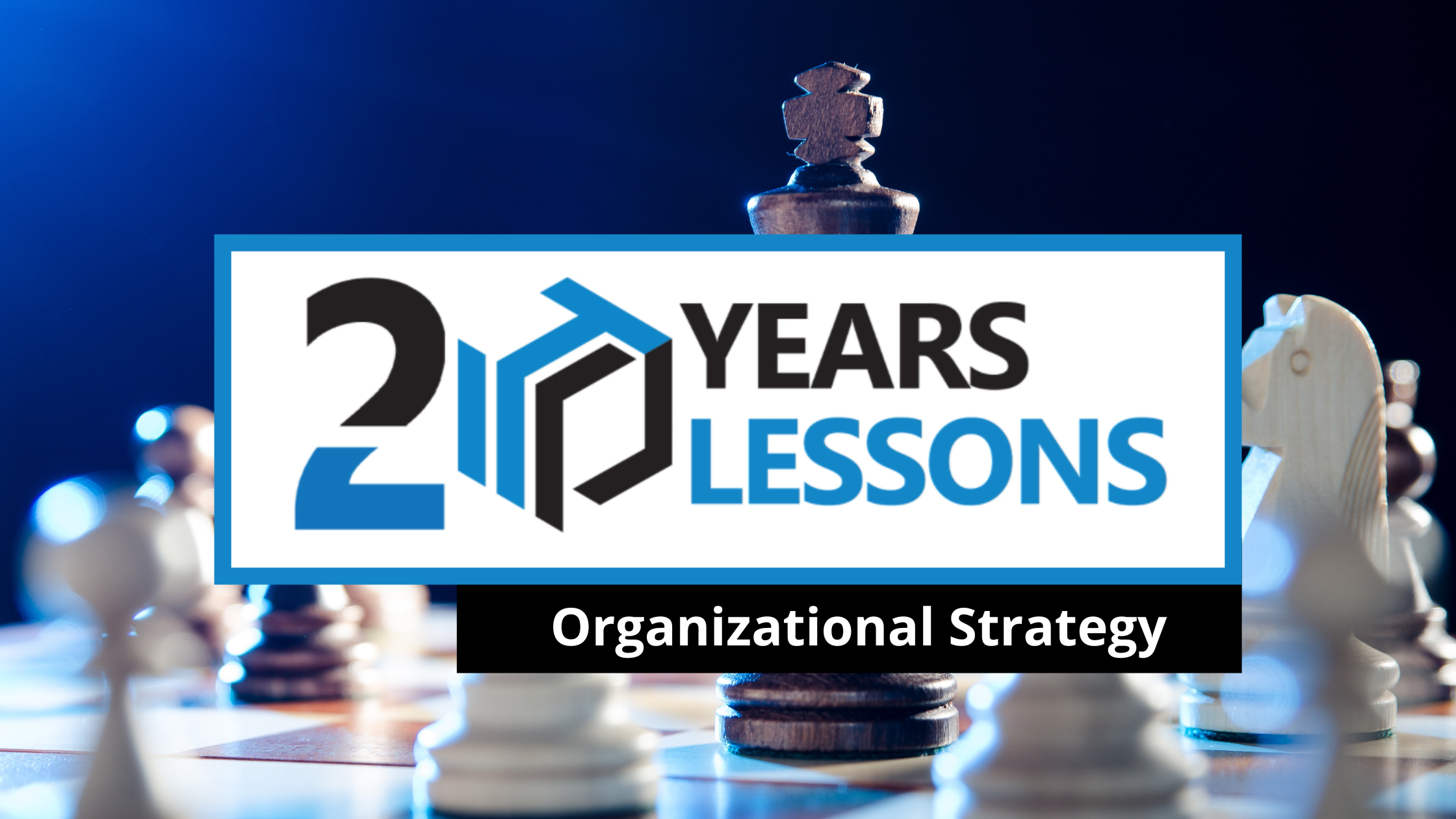
A few years back, Mytech brought in a business coach.
We’d recently founded our first branch in another state and were struggling to help them truly feel like part of the organization. The new Colorado branch needed information, and our old default of “osmosis by proximity” wasn’t going to cut it from 850 miles away. We needed to find a way to bridge that gap in awareness and communication, so Colorado could make decisions on behalf of Mytech in the new market.
At least, that’s what we thought the problem was. As we talked further with our business coach, it became clear that a bigger issue was hidden under the surface, across every team and its leadership, company-wide. The Colorado branch’s acute need for information was just the symptom that finally brought the issue to light. The real problem, across all of Mytech, was that we didn’t have a unifying, organization-wide strategy – we had answers to the obvious questions, but no framework for responding to the unexpected.
“That’s not a strategy.”
Our business coach asked us a lot of questions. Some of the answers, we were ready for; a lot of them, we weren’t. We passed these questions along to different departments & teams at Mytech, and it became clear that there were a lot of things we’d just assumed everyone agreed on. But not only didn’t we have answers to many of these questions – our guesses weren’t even the same!
Over and over, the coach asked “what’s your strategy?” And we fixated on what we did: “we serve small- and medium-sized businesses,” “we seek to grow in different markets,” “we focus on managed services.” Every time, the coach responded “That’s not a strategy.” It seems obvious in hindsight, but in the moment we’d lost sight of the big picture: your strategy isn’t just the things you do. It’s bigger than that, it has to unify everything, and it has to be intentional.
Decision-making tools
Taken all together, our answers to these questions formed the bedrock for our organizational strategy – the guiding document for every decision our team members make. An organizational strategy covers plenty of different factors, each at a different layer of doing business, but each works together to give clarity to everyone on our team.
For example, Mytech's Brand Promise (“our clients will achieve four times more value & productivity from their IT investments”) informs every discussion of our managed services, and helps guide our recommendations, based on whether they’ll reduce IT problems, unexpected downtime, and negative client experiences. We see every project through the lens of “will this fulfill our Brand Promise for our clients?” for a quick and effective litmus test.
Meanwhile, our Brand Promise Guarantee helps our Sales team navigate discussions with our clients, since they know the expectations our clients will have for Mytech’s services. And our Brand Promise Guarantee also reduces or removes the risk to choose our services: it helps our clients take that “leap of faith” to engage our services, knowing their agreement is based on our measurable performance.
But nowhere is this clarity of purpose more evident than one of its most important pieces: the One-Phrase Strategy.
One-Phrase Strategy
One part elevator pitch, one part guiding principle – a One-Phrase Strategy connects everything else together, and gives everyone at your organization something to fall back on. You’ve probably heard Mytech’s One-Phrase Strategy already: “Make IT Easy.” Everything we do, every decision we make, every tough call, is informed by whether or not it will make the IT experience easier for our clients.
In a single week, Mytech’s help desk receives anywhere from 400-700 support requests. Some of them are bound to carry uncertainty, or fall outside the “standard” array of support requests. Whenever our team members encounter ambiguity, we want them to feel empowered. We don’t want them to feel required to run off and ask their manager’s permission every time – we want those decisions to come from them directly, wherever possible, so they can be confident embodying our values & mission!
Our team members already had guidance on how to represent Mytech’s Values, because those values are at the core of why we’re in business. Now, with the addition of a One-Phrase Strategy, our team members have even clearer guides in place. Think of every decision as sailing down a river: as long as our team members stay within those two riverbanks (Values on one side, One-Phrase Strategy on the other), they can be confident in making decisions that Mytech will support.
All on the same page
It took a while to solidify our organizational strategy, but the effort and time were well worth it. For one thing, we didn’t need to cram so many people into our meetings anymore: as long as they knew the big picture of the task at hand, our organizational strategy supported their decision-making. We saved time on tiny back-and-forth clarification questions, as team members were empowered to make decisions.
Our new organizational strategy also helped us more narrowly define our scope of services. We knew what we were able to deliver, so we didn’t feel compelled to chase opportunities outside of that box. That meant a more targeted sales approach, and a willingness to say “hey, it sounds like Mytech isn’t the best fit for your IT needs, and that’s okay.” You know you have a strategy when you say “no” more than you say “yes,” as you carve out the niche in which you plan to excel. An organizational strategy means an end to wild goose chases.
But nowhere was this change more evident than at our new Colorado branch. As Patti, our Colorado General Manager, puts it:
Once everyone put their seal on our organizational strategy, it felt very freeing. We felt like we were part of it, like we could fully own our decision-making. Now that we have this common language of our strategy, we can all talk about complicated things and understand each other. We’d received our marching orders and could get started, and the corporate branch was confident that we felt like a part of Mytech, even from so far away.
Intentional success
Your organization’s strategy won’t just happen by accident one day. While we’d assumed everyone was on the same page, strategy-wise, we'd actually wound up with multiple teams going in all different directions. And even though we were still aligned values-wise, and therefore could still muddle through and eventually accomplish our goals, there was a much better way available.
It took conscious effort and plenty of hashing out to truly crystallize our organizational strategy. But once it was done, the benefits were immediately apparent. If any of this story feels familiar to you, I highly recommend taking a closer look at your own organization’s approach. And if you want any more details on Mytech’s story, or the distinct steps we took to solidify our Organizational Strategy, we’re always happy to talk.
|


